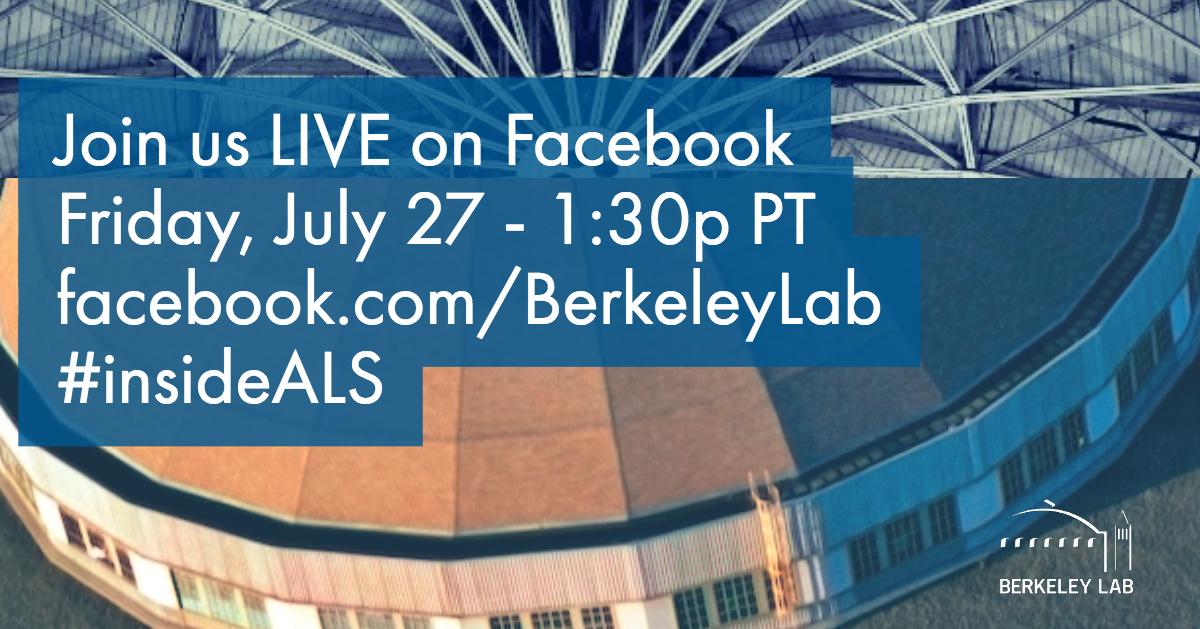 What goes on at an X-ray light source? Tune in to Lawrence Berkeley National Laboratory’s (Berkeley Lab’s) Facebook page, at https://www.facebook.com/BerkeleyLab/, at 1:30 p.m. (Pacific Time) this Friday, July 27.
What goes on at an X-ray light source? Tune in to Lawrence Berkeley National Laboratory’s (Berkeley Lab’s) Facebook page, at https://www.facebook.com/BerkeleyLab/, at 1:30 p.m. (Pacific Time) this Friday, July 27.
Staff from Berkeley Lab’s Advanced Light Source (ALS) will describe this science facility and their work. The Facebook Live event will cater to an all-ages audience.
You will hear from:
- Sol Omolayo, ALS Vacuum Systems Group Leader in the Lab’s Engineering Division. Omolayo supports the operation of the ALS and also work on vacuum design and R&D for ALS projects including the ALS Upgrade (ALS-U) project. He joined the ALS in 2016, relocating from the U.K. Because nearly all ALS experiments takes place under vacuum, Omalayo’s group has an important role in maintaining the vacuum levels across the ALS. The vacuum levels required on the ALS ranges from Earth’s atmospheric pressure down to pressures found on the moon. To achieve these pressures, Sol’s team uses a wide range of vacuum pumps ranging from mechanical pumps similar to a household vacuum pumps to turbo molecular pumps that spins at near the speed of sound.
- Monika Blum, scientific engineering associate in the ALS Division. Blum, who is originally from Germany, had used the ALS since 2005. She joined the ALS in November 2017 and was previously an assistant research professor at the University of Nevada, Las Vegas. She is focused on studies involving spectroscopy, which explores how light interacts with samples to reveal their properties in great detail, and in finding ways to adapt techniques that typically involve ultra-high-vacuum conditions for use in more normal conditions.
- Ethan Crumlin, staff scientist in the ALS Division. Crumlin and his research group work with scientists from all over the world. He uses X-rays to understand materials elemental, chemical, and electrical information while they are in their typical operating environment. The types of samples he studies range from the materials inside of batteries, to materials known as catalysts that make it easier to make fuel from electricity.
Watch #insideALS on Twitter for more information about this upcoming event, and we welcome you to submit questions in advance of the live-stream event as Facebook comments.
About the ALS
https://als.lbl.gov/about/about-the-als/
Quick Facts
https://als.lbl.gov/wp-content/uploads/2016/06/quick-facts.pdf
3D/Virtual Tour of ALS
https://als.lbl.gov/about/3d-models-virtual-reality/
Maps of ALS Beamlines
https://als.lbl.gov/beamlines/
https://als.lbl.gov/wp-content/uploads/2018/04/2018-04-beamclock.pdf